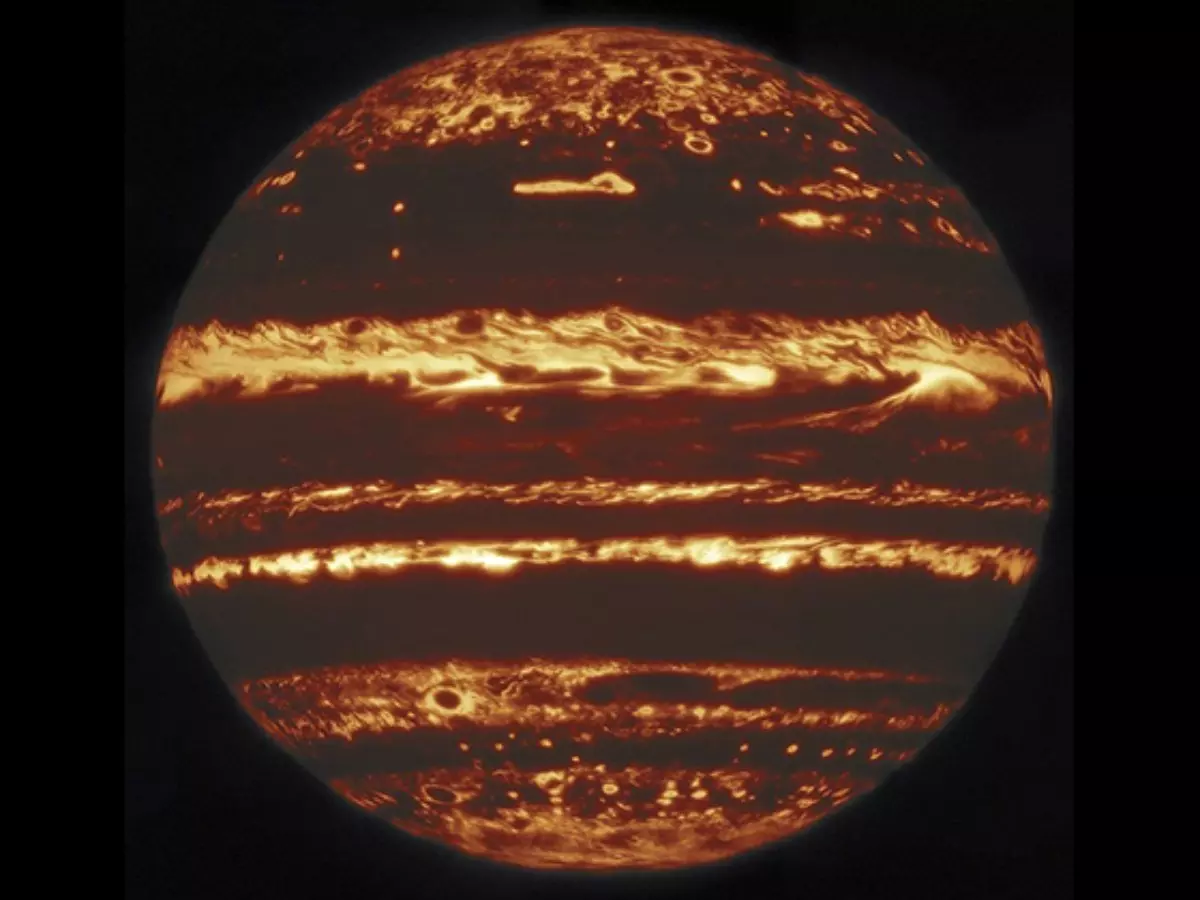How Astronomers Got 'Lucky' & Captured Some Of The Sharpest Images Of Jupiter, Ever!
Click here to find out how astronomers managed to capture some of the sharpest images of jupiter using lucky imaging.

Astronomers have managed to produce awe inspiring new images of Jupiter, by tracing the glowing regions of warmth that lie beneath the gas giant's cloud tops.
The magnificent picture below was captured in infrared by the Gemini North Telescope in Hawaii's dormant volcano, Mauna Kea. It is one of the sharpest images and observations of the planet ever made from earth. The observations reveal lightning strikes and storm systems taking formation around deep clouds of water - ice and liquid. The images show the warm, deep layers of the planet¡¯s atmosphere glowing through gaps in thick cloud cover.
 GEMINI OBSERVATORY/M.H.WONG ET AL
GEMINI OBSERVATORY/M.H.WONG ET AL
To get high resolution scientists used a technique called ¡®lucky imaging¡¯.
¡°The Gemini data were critical because they allowed us to probe deeply into Jupiter¡¯s clouds on a regular schedule. We used a very powerful technique called lucky imaging¡±, The Guardian quoted Michael Wong, of University of California, Berkeley, as saying.
 NASA/ESA/A.SIMON
NASA/ESA/A.SIMON
The technique basically involves obtaining multiple, very short exposure images of the target and then using only those parts of the image that are the sharpest, i.e. have minimum turbulence. All these images are put together to give clarity that no single exposure can. The technique erases the blurring effect of looking through Earth¡¯s atmosphere.
¡°These images rival the view from space,¡± Wong reportedly said.
 NASA
NASA
Jupiter, as you know, is the largest planet of our solar system. It is 11 times wider than Earth and 300 times bigger. In composition Jupiter resembles a star more as its made mostly of hydrogen and helium.
Astronomers seem to have captured multiple images, however only seems to have been released as of now. These images will help astronomers understand the planet better.
